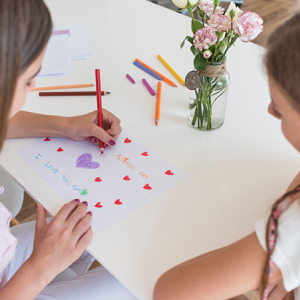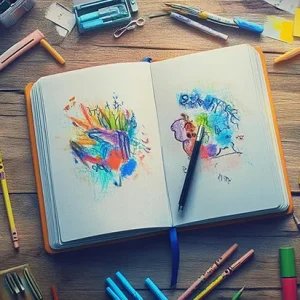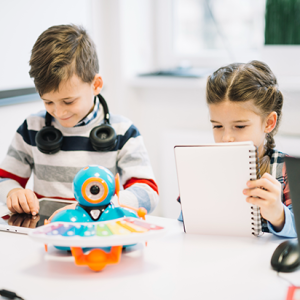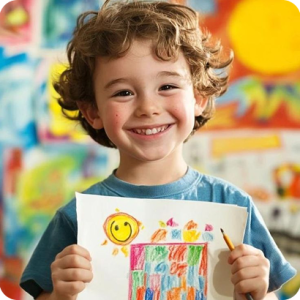Picture a child with a box of crayons, a blank sheet of paper, and an imagination ready to spill onto the page. To many adults, this might look like playtime. But for kids, these simple moments of drawing are building blocks for something much bigger—creative thinking, problem-solving, and skills that will serve them long into adulthood.
Early exposure to drawing is far more than just a fun activity. It’s a training ground for life. When children are encouraged to create freely, they aren’t only learning how to make a picture—they’re learning how to express themselves, take risks, and see the world in new ways.
Let’s look at why those first doodles matter so much and how drawing in early childhood can shape a brighter, more capable future.
Drawing Builds Confidence in Self-Expression
One of the first lessons drawing teaches is that ideas have value. When a child sketches a cat, a rocket ship, or even a squiggly line that only they understand, they’re practicing self-expression. This sense of ownership is powerful.
Kids who feel comfortable expressing themselves on paper are more likely to feel confident sharing their thoughts, opinions, and solutions in other areas of life. That’s a skill that translates directly into school, friendships, and eventually the workplace.
Ellie Christine Patton, author of How To Draw: Workbook for Young Artists, captures this spirit beautifully. She designs her books so that kids don’t feel intimidated by perfection. Instead, they feel encouraged to try, laugh, and enjoy the process. That playful, pressure-free approach helps kids trust their own ideas—a mindset that can last a lifetime.
Early Art Encourages Creative Thinking
Drawing is problem-solving in disguise. When a child wants to draw a puppy but doesn’t know how to start, they experiment—shapes, lines, circles, and adjustments until the puppy comes to life. That act of trial and error strengthens critical thinking.
Creative thinking is more than being “artsy.” It’s about imagining possibilities, making connections, and approaching challenges from fresh angles. Whether it’s designing a science project, writing a story, or solving real-world issues, kids who learn to think creatively have an edge.
In addition, the best part? This kind of creative training doesn’t feel like work. It feels like fun.
Drawing Sharpens Focus and Patience
In today’s fast-paced digital world, patience is becoming a rare skill. Drawing, however, naturally slows kids down. To complete a picture, they need to pay attention, practice control, and stick with it until their vision matches what’s on the page.
That persistence isn’t just an art skill—it’s a life skill. Children who practice focusing through drawing often carry that determination into their studies, sports, or hobbies. They’re less likely to give up when something feels tricky, because they’ve already learned that effort brings results.
Art Connects Emotions and Mental Health
Children sometimes don’t have the words to explain their feelings, but they do have colors, shapes, and pictures. Drawing becomes a safe outlet for expressing emotions—whether it’s excitement, frustration, or joy.
Over time, this emotional outlet helps kids build resilience. They learn that creativity is a healthy way to cope with challenges, and they become more comfortable handling big feelings. Research has shown that engaging in creative activities can help lower stress, improve mood, and foster a positive sense of self. Starting young means giving kids those tools early.
Creative Habits Lead to Lifelong Skills
The long-term benefits of drawing ripple outward into nearly every area of life. Here are just a few ways early art exposure shows up later:
- Problem-solving at work: Adults who were encouraged to think creatively as kids often approach professional challenges with innovation.
- Communication: Those early experiments with expression help build confidence in public speaking, writing, and collaboration.
- Adaptability: Kids who learn to “make it work” in art don’t freeze when faced with new or unfamiliar situations—they figure it out.
- Joy in learning: Perhaps most importantly, they carry the understanding that learning can be fun, not something to dread.
How Parents and Teachers Can Encourage Early Art
You don’t need to be an artist yourself to give kids the gift of creative thinking. What matters most is providing opportunities and encouragement.
- Keep it lighthearted. Let kids explore without the pressure of making something “perfect.”
- Offer simple tools. A few pencils, markers, and paper are enough to spark creativity.
- Celebrate effort. Instead of focusing on results, praise the imagination, focus, or storytelling behind the picture.
- Provide inspiration. Books like How To Draw: Workbook for Young Artists are great for giving kids a starting point that feels fun and easy.
Final Thoughts: Creativity as a Lifelong Advantage
Early exposure to drawing and creative thinking is more than just filling time on a rainy afternoon. It’s an investment in a child’s future. From building confidence and problem-solving to supporting emotional health and persistence, the benefits last well beyond childhood.
Ellie Christine Patton’s mission is to make drawing approachable and joyful for kids. That joy is the key. Because when children discover that creativity is fun, they carry that spark with them—into classrooms, careers, and every corner of life.
Therefore, the next time your child picks up a crayon and starts doodling, remember: it’s not “just” a drawing. It’s the start of a creative adventure with long-term rewards.







